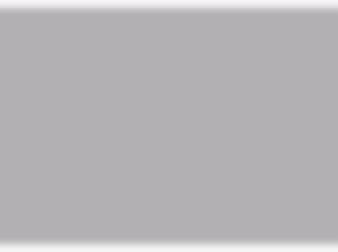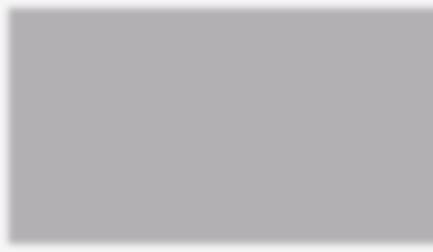
15 minute read
Rotocalco, una tecnologia per molti mercati, con la capacità di attrarre l’attenzione dei giovani
Il Gruppo Italiano Rotocalco di Acimga coordinato da Gianmatteo Maggioni di ICR (a oggi sono circa 20 le aziende che ne fanno parte) risulta essere sicuramente uno dei più attivi, sia nel proporre eventi, sia nella stesura di documenti, e dopo il primo volume che ha voluto introdurre la tecnologia di stampa roto con la descrizione degli elementi più caratterizzanti di questo processo, adesso è la volta di una nuova pubblicazione dal titolo “Rotocalco una tecnologia per molti mercati” nella quale si è posto l’accento sulle diverse applicazioni della tecnologia rotocalco, facendo parlare gli utilizzatori e mettendo così in risalto l’elevato livello qualitativo che questo processo può offrire per diversi mercati di sbocco, che non si fermano solo al prodotto editoriale e al packaging ma che dal decorativo al tessile, passando per l’industria dell’arredamento ai circuiti stampati, possono trovare nella stampa rotocalco un prezioso alleato.
Del resto come simpaticamente sottolineato da Gianmatteo Maggioni in apertura del convegno, interrogando l’intelligenza artificiale su che cosa sia la stampa rotocalco, è emerso che “si tratta di una tecnologia che ha rivoluzionato il mondo della stampa, permettendo di ottenere risultati di altissima qualità su una vasta gamma di supporti. Grazie alla sua precisione e versatilità, la stampa rotocalco è
Advertisement
ORGANIZZATA DAL GRUPPO ITALIANO ROTOCALCO DI ACIMGA, LA ROTO4ALL CONFERENCE DI QUEST’ANNO OLTRE AD ATTIRARE IN SALA CIRCA 200 OPERATORI, HA DIMOSTRATO LA SUA CAPACITÀ ATTRATTIVA VERSO IL MONDO DEI GIOVANI E QUESTO GRAZIE A UN LAVORO IN COLLABORAZIONE CON L’ISTITUTO TECNICO SUPERIORE RIZZOLI DI MILANO, CHE HA SFATATO ALCUNI MITI CHE ALEGGIANO ATTORNO A QUESTA STORICA, MA ANCORA VALIDA TECNICA DI STAMPA ancora oggi una delle tecniche più utilizzate nell’industria grafica e della stampa. Conoscere i suoi segreti e le sue applicazioni può quindi essere un vantaggio competitivo per chi lavora in questo settore”.
Le Giovani Generazioni E La Stampa Rotocalco
Fra le attività promosse dal Gruppo Rotocalco, la formazione ha un ruolo di straordinaria importanza, tanto che è stata avviata una collaborazione con l’Istituto Tecnico Superiore Angelo Rizzoli di Milano, e il corso “Packaging Specialist” la cui prima edizione si è tenuta nel 2020/21 è oggi alla terza edizione, e altri interventi formativi sulle tecnologie di stampa rotocalco sono in programmazione nel nuovo ciclo.
Da questa stretta partnership sono poi scaturite diverse visite, e altre ne sono in programma nel corso di quest’anno, presso le sedi produttive delle aziende associate al Gruppo, che hanno aperto e apriranno i propri stabilimenti produttivi alle visite didattiche degli studenti. Lo scorso anno siamo stati direttamente coinvolti nella visita di una classe presso lo stabilimento BOBST di San Giorgio Monferrato, e possiamo testimoniare lo stupore e la grande attenzione dei ragazzi davanti alle tecnologie di produzione, studiate fino ad allora sui libri di scuola. I ragazzi dell’Istituto Tecnico Rizzoli sono stati protagonisti al Convegno Roto4All, partecipando ai lavori sia con la classe del corso “Packaging specialist” ma anche con la sezione che si occupa di omni-channel, ovvero i futuri marketing manager del domani, che dovranno capire come fare comunicazione sui diversi canali, utilizzando il meglio di ogni canale, e la stampa è senz’altro degli strumenti per poter entrare in contatto coi consumatori e integrandosi anche perché no con il digitale.



La Tecnologia Rotocalco E I Miti Da Sfatare
Per poter essere attrattivi agli occhi delle giovani generazioni, una delle prerogative essenziali è senz’altro quella di mettersi a nudo e provare ad analizzare tutti gli aspetti sui quali per diversi motivi nel corso della storia, si sono create delle false dicerie che hanno coinvolto e circondato la tecnologia di stampa rotocalco, e oggi anche grazie al fatto che vi sia un Gruppo molto attivo in seno ad Acimga, e con la partecipazione attiva dei ragazzi del Rizzoli, questa operazione verità ha vissuto un suo primo confronto proprio all’ultimo Roto4All dello scorso 9 marzo a Milano.
Carlo Carnelli, di Color Consulting e coordinatore della Commissione Tecnica, insieme a Giacomo Truffi di BOBST e Ivano Andrighetto di Brofind hanno risposto a tutte le domande che i giovani studenti hanno voluto sottoporgli per provare a fare un po’ di chiarezza.
ORGANIZED BY THE ITALIAN GRAVURE GROUP OF ACIMGA, THIS YEAR’S ROTO4ALL CONFERENCE, IN ADDITION TO ATTRACT AROUND 200 OPERATORS, DEMONSTRATED ITS ABILITY TO ATTRACT THE WORLD OF YOUNG PEOPLE AND THIS THANKS TO THE COLLABORATION WITH THE RIZZOLI TECHNICAL INSTITUTE OF MILAN, WHICH DEBUNKED SOME MYTHS SURROUNDING THIS HISTORIC BUT STILL VALID PRINTING TECHNIQUE
The Italian Gravure Group of Acimga coordinated by Gianmatteo Maggioni of ICR (to date there are about 20 companies that are part of it) is certainly one of the most active, both in proposing events and in drafting documents, and after the first volume which introduced gravure technology with a description of the most characterizing elements of this process, now it’s the turn of a new publication entitled “Gravure a technology for many markets” in which the emphasis is placed on the different applications of the gravure technology, making users talk and thus highlighting the high quality level that this process can offer for various outlet markets, which do not stop only at the editorial product and packaging but which also go from decorative to textile, passing through furnishings industry to printed circuits. For these markets gravure is a precious ally. After all, as nicely underlined by Gianmatteo
Maggioni at the opening of the conference, by questioning artificial intelligence on what gravure printing is, it emerged that “it is a technology that has revolutionized the world of printing, making it possible to obtain extremely high quality results on a wide range of substrates. Thanks to its precision and versatility, gravure printing is still today one of the most used techniques in the graphic and printing industry. Knowing its secrets and its applications can therefore be a competitive advantage for those who work in this sector”.
The Younger Generation And Gravure Printing
Among the activities promoted by the Gravure Group, training plays an extraordinarily important role, so much so that a collaboration has been set up with Angelo Rizzoli Higher Technical Institute in Milan, and the “Packaging Specialist” course, the first edition of which was held in 2020/21 is now in its third edition, and other training sessions about gravure printing technologies are planned for the new cycle. This close partnership then resulted in several visits, and others are planned this year, to production sites of the companies associated to the Group, which have opened and will open their production plants to educational visits by students. Last year we were directly involved in the visit of a class at BOBST plant in San Giorgio Monferrato, and we can testify to the amazement and great attention of young people in front of the production technologies, studied until then in schoolbooks.p1
The students of Rizzoli Technical Institute were protagonists at Roto4All Conference, participating in the work both with the class of the “Packaging specialist” course but also with the section that deals with omni-channel, that is the future marketing managers of tomorrow, who will have to understand how to communicate on various channels, using the best of each channel, and printing is undoubtedly one of the tools to be able to get in touch with consumers and also integrating, why not, with digital.
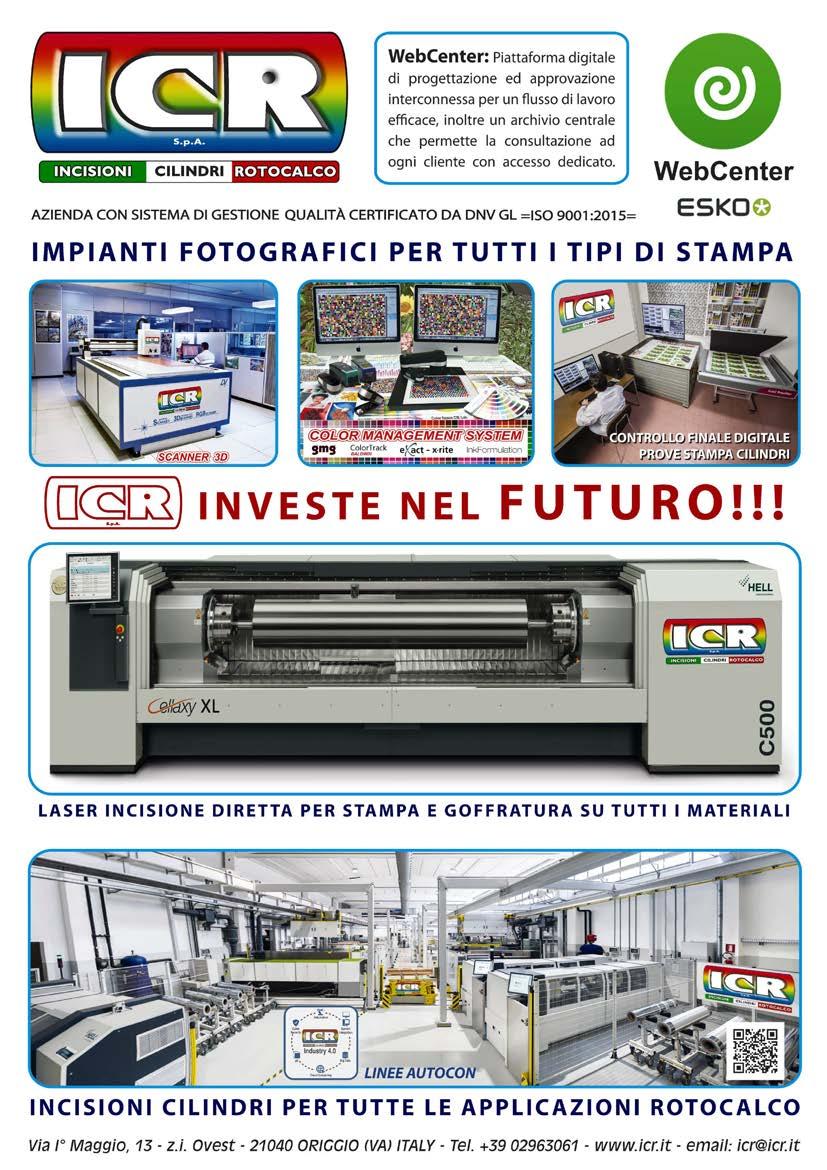
- La rotocalco è una tecnica di stampa vecchia, legata a quotidiani e periodici e ormai poco usata?
Nel campo editoriale è in atto un declino della rotocalco ma non per una questione tecnologica, bensì per un mercato che non ha più i volumi del passato. Al contrario invece i trend degli altri mercati nei quali si utilizza stampa rotocalco sono in crescita. L’80% del mercato dell’imballaggio flessibile a livello mondiale viene stampato in flexo e rotocalco, e previsioni di crescita fino al 2025 che indicano la flexo come tecnologia più in voga soprattutto negli Stati Uniti, anche per gli sviluppi tecnologici che l’hanno avvicinata molto alla qualità di stampa rotocalco, ma con quest’ultima che difende comunque le suo quote di mercato e anzi le incrementa, soprattutto nei Paesi dove per tradizione la roto ha sempre avuto la meglio come Cina e Sud Est Asiatico.
- La rotocalco è nota per la sua qualità di stampa ma altre tecnologie oggi si sono innovate e anche grazie all’esacromia ed eptacromia la qualità di stampa è migliorata. L’uso dell’esacromia ed eptacromia diventa di conseguenza appetibile sulle corte tirature mentre la rotocalco è più vantaggiosa solo per le grandi tirature? nator of the Technical Commission, together with Giacomo Truffi, BOBST and Ivano Andrighetto, Brofind, answered all the questions that young students wanted to submit to them to try and shed some light. them, especially in countries where gravure has traditionally always had the upper hand such as China and South East Asia.
Il concetto di esacromia ed eptacromia è slegato dalla tecnica di stampa e possono essere tranquillamente applicati anche alla stampa rotocalco. BOBST è dal 2018 che analizza il processo di stampa in eptacromia e oggi è possibile ottenere il 95% dei colori pantone impiegando i 7 colori CMYK+Orange+Green+Violet.
Il processo di stampa rotocalco è conosciuta per la sua notevole qualità, anche grazie al fatto che lavora grazie a un cilindro inciso, che risulta essere molto più stabile nel tempo. Nel momento in cui si riescono a controllare tutte le variabili del processo di stampa (colore, viscosità, settaggi macchina…) rendendole ripetibili, questo si traduce in una stabilità della stampa nel tempo e una riproducibilità della stampa nelle successive tirature. Adottando l’eptacromia si riducono notevolmente i tempi di set-up della macchina, passando dai 40-60 minuti di una rotocalco tradizionale ai 15 minuti di una macchina settata per l’eptacromia.
In caso di diversi lavori in corte tirature da 5000 metri lineari, sfruttando la fascia stampa standard da 1200mm, è possibile abbinare anche 4-5 lavori differenti ottenendo pertanto lavori da 20/25000 metri lineari, sicuramente tirature più idonee per un processo roto.
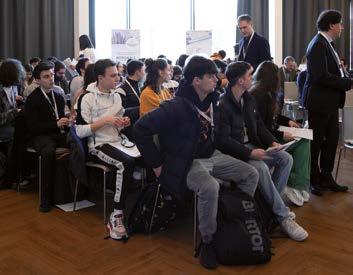
- Is gravure an old printing technique, linked to newspapers and magazines and now little used?
Gravure Technology And The Myths To Dispel
In order to be attractive in the eyes of the younger generations, one of the essential prerogatives is undoubtedly that of laying bare and trying to analyze all the aspects on which, for various reasons, throughout history, false rumors have been created which have involved and surrounded gravure printing technology, and today also thanks to the fact that there is a very active Group within Acimga, and with the active participation of the Rizzoli guys, this operation actually experienced its first confrontation right at last Roto4All on March 9th in Milan. Carlo Carnelli, Color Consulting and coordi-
In the publishing field, a decline of gravure is underway but not for a technological issue, but for a market that no longer has the volumes of the past. On the contrary, however, the trends of the other markets in which gravure printing is used are growing. 80% of the global flexible packaging market is printed in flexo and gravure, and growth forecasts up to 2025 indicate flexo as the most popular technology especially in the United States, also due to the technological developments that put flexo printing very close to gravure printing quality, but with the latter defending its market shares and indeed increasing
- Gravure is known for its print quality but other technologies have been innovated today and also thanks to hexachrome and heptachrome the print quality has improved. Does the use of hexachromy and heptachromy consequently become attractive for short runs, while gravure is more advantageous only for large runs?
The concept of hexachromy and heptachromy is unrelated to the printing technique and can also be easily applied to gravure printing. BOBST has been analyzing the printing process in heptachromy since 2018 and today it is possible to obtain 95% of pantone colors using the 7 colors CMYK + Orange + Green + Violet. Gravure printing process is known for its remarkable quality, also thanks to the
- Nella stampa rotocalco si usano inchiostri a base solvente, quindi inquinante e dall’impatto ambientale negativo?
Il solvente deve essere considerato una risorsa poiché è il mezzo attraverso il quale l’inchiostro viene rilasciato sul supporto di stampa. La rotocalco utilizza formule monosolvente, ed è la condizione ideale per il suo recupero tramite impianti dedicati per abbattimento e recupero del solvente. Oggi esistono impianti di recupero modulari a carboni attivi, come quelli presentati da Ivano Andrighetto di Brofind, con il solvente che viene rigenerato, condensato e distillato per un successivo utilizzo nel processo produttivo, sia esso stampa rotocalco o laminazione. Il ritorno dell’investimento degli impianti di recupero solvente è mediamente di 3 anni, a seconda della produzione del cliente e se sono impianti che rispondono a pieno alle esigenze di una economia circolare. Inoltre questi fact that it works thanks to an engraved cylinder, which is much more stable over time. When it is possible to control all the variables of the printing process (colour, viscosity, machine settings…) making them repeatable, this translates into print stability over time and print reproduci- bility in subsequent runs. By adopting heptachromy, machine set-up times are considerably reduced, going from 40-60 minutes for a traditional gravure to 15 minutes for a machine set up for heptachromy.
In the case of several jobs in short runs impianti generano calore che può essere reimpiegato nel processo di stampa rotocalco.
- Gli inchiostri ad acqua sono inchiostri green e le tecnologie che usano inchiostri a base solvente non esisteranno più?
La stampa all’acqua in rotocalco è una tendenza che sta emergendo, soprattutto in alcune aree del mondo. Bisogna però evitare di fare del “green-washing” in quanto innanzitutto anche negli inchiostri base acqua è presente alcool nella quantità massima del 30%, inoltre per asciugare questi inchiostri è richiesta una temperatura più alta quindi sono necessarie cappe più di asciugamento più lunghe e di conseguenza un maggior quantitativo di energia fino a un +60%. Anche in questo caso è necessario un post-trattamento per poter emettere in atmosfera i flussi di vapore estratti dall’asciugatura di questi inchiostri.
- La rotocalco è una tecnica di stampa vecchia che non si adatta alle tecnologie ibride e multi-processo?
La multitecnologia è ormai consolidata nelle aziende ed è importante conoscerle tutte al fine di offrire al of 5000 linear metres, using the standard 1200mm printing width, it is also possible to combine 4-5 different jobs thus obtaining jobs of 20/25000 linear metres, certainly more suitable runs for a gravure process.

- Solvent-based inks are used in gravure printing, therefore polluting and with a negative environmental impact?
The solvent must be considered a resource since it is the medium through which the ink is released onto the substrate. Gravure uses mono-solvent formulas and is the ideal condition for its recovery through dedicated systems for abatement and solvent recovery. Today there are modular activated carbon recovery plants, such as those presented by Ivano Andrighetto of Brofind, with the solvent that is regenerated, condensed and distilled for subsequent use in the production process, gravure printing or lamination. The return on investment of solvent recovery plants is on average 3 years, depending on the customer’s production and if they are plants that fully meet the needs of a circular economy. Furthermore, these plants generate heat which can be reused in the gravure printing process.
- Are water-based inks green inks and will technologies that use solvent-based inks no longer exist?
Gravure water-based printing is an emerging trend, especially in some areas of the world. However, it is necessary to avoid “green-washing” as first of all, even in water-based inks there is alcohol in the maximum quantity of 30%, furthermore, to dry these inks a higher temperature is required therefore longer and are necessary longer drying hoods and a greater quantity of energy up to +60%.
Also in this case, a post-treatment is necessary in order to be able to emit the vapor flows extracted from the drying of these inks into the atmosphere.
Sun Master 545 - Flat Handle


cliente la migliore soluzione per la specifica esigenza. La rotocalco è una delle tecnologie migliori per offrire diverse soluzioni dalla stampa alle lacche UV, laminazione a solvente, senza solvente, acqua, cold-seal e lacche a registro, spalmature hot-melt. E grazie alla concezione modulare con cui queste macchine vengono progettate, la rotocalco è predisposta per ospitare in linea altri moduli di diverse tecnologie e per diverse applicazioni. La grande varietà di materiali stampabili in rotocalco la rendono idonea ai film plastici così come la carta e soluzioni monomateriali, e nel processo di produzione di packaging belli e accattivanti, la tecnologia rotocalco sarà sempre una protagonista, con una grande capacità di adattamento alle nuove esigenze che il mercato sottoporrà.
A Tu Per Tu Con Gianmatteo
MAGGIONI DI ICR SPA INCISIONI CILINDRI ROTOCALCO, COORDINATORE GRUPPO ITALIANO ROTOCALCO
Come si posiziona la tecnologia rotocalco all’interno del mercato grafico italiano?
“Ritengo che la rotocalco continui ad essere il riferi-
- Is gravure an old printing technique that is not suitable for hybrid and multi-process technologies?
Multi-technology is now consolidated and it is important to know them all in order to offer the customer the best solution for the specific need. Gravure is one of the best technologies to offer various solutions from printing to UV lacquers, solvent mento qualitativo del mercato per la stampa di materiale flessibile bobina a bobina. Ad oggi non vedo un’alternativa che garantisca costanza e ripetibilità di risultato come la roto può offrire. Certamente la riduzione della tiratura media va a favore di altre tecnologie con costi di avviamento minori, ma per i Brand owner che esigono la massima qualità la soluzione è una sola”. lamination, solvent-free, water, cold-seal and register lacquers, hot-melt coatings. And thanks to the modular concept with which these machines are designed, the gravure is set up to house other modules of different technologies and for different applications in line. The great variety of gravure printable materials make it suitable for plastic films as well as paper and single-material solutions, and in the production process of beautiful and captivating packaging, gravure technology will always be a protagonist, with a great ability to adapt to new needs that the market will submit.
Perché nel corso degli anni si è creato attorno alla rotocalco un clima a dir poco ostile?
“Non parlerei di clima ostile, piuttosto, altre tecnologie di stampa sono state promosse in maniera molto più efficace, si rivolgono ad un potenziale bacino di acquirenti molto più ampio, perché viene richiesto un investimento in termini di spazio e macchinari molto inferiore alla rotocalco e questo quindi ne accresce l’interesse e le potenzialità di espansione. Certo è che in questi anni non vi sono stati stampatori roto che hanno abbandonato la tecnologia per passare ad una tecnologia alternativa, l’hanno piuttosto integrata per poter offrire ai propri clienti un ventaglio di prodotti realizzati con sistemi diversi”.
Face To Face With Gianmatteo Maggioni Of Icr Spa Incisioni Cilindri Rotocalco Coordinator Of The Italian Gravure Group

How is gravure technology positioned within the Italian graphic market?
“I believe that gravure continues to be the qualitative reference on the market for web-to-web printing of flexible material. To date I don’t see an alternative that guarantees constancy and repeatability of results as gravure can offer. Certainly the reduction of the average circulation favors other technologies with lower start-up costs, but for brand owners who demand the highest quality, there is only one solution”.
Why has a hostile climate developed around gravure over the years?
“I would not speak of a hostile climate, rather, other printing technologies have been promoted in a much more effective way, they are aimed at a much wider potential group of buyers, because an investment is required in terms of space and machinery that is much lower than gravure and this therefore increases its interest and potential for expansion. What is certain is that in recent years there have been no gravure printers who have abandoned the technology to switch to an


Stampa rotocalco e sostenibilità, quali i punti critici su cui c’è ancora molto da lavorare?
“La rotocalco ha delle caratteristiche nel suo processo che rispondono ai criteri dell’ economia circolare più di altre tecnologie di stampa, penso al riutilizzo dei cilindri, al riciclo del rame degli stessi, agli impianti di recupero solvente… alternative technology, rather they have integrated it in order to be able to offer their customers a range of products made with different systems”.
Oramai è definito e tracciato anche il percorso per la sostituzione del cromo esavalente che viene utilizzato per ricoprire i cilindri una volta incisi, con alternative tecnologiche in fase di sperimentazione che non prevedono più l’utilizzo del cromo o più semplicemente con l’utilizzo del cromo trivalente”.
Il progetto giovani è senz’altro un ottimo punto di partenza. Quali altre iniziative avete in progetto per ridare il giusto lustro a questa tecnica di stampa?
“Come Gruppo Italiano Rotocalco crediamo che sia fondamentale per il futuro della tecnologia lavorare sulla formazione dei ragazzi che si affacciano al mercato grafico, in parallelo riteniamo altrettanto importante lavorare a stretto contatto con le altre realtà di filiera per recepire le esigenze del mercato in continua evoluzione ed essere reattivi proponendo soluzioni di qualità in tempi brevi”.
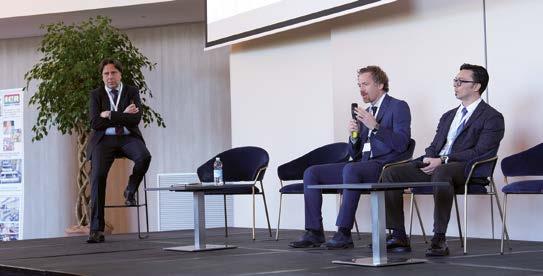
Gravure printing and sustainability, what are the critical points on which there is still a lot to work on?
“Gravure has some characteristics in its process that meet the criteria of the circular economy more than other printing technologies, I am thinking of the reuse of the cylinders, the recycling of their cop- per, the solvent recovery systems… By now the path for the replacement of the hexavalent chromium which is used to cover the cylinders once engraved has also been defined and traced, with technological alternatives in the experimental phase which no longer involve the use of chromium or more simply but the use of chromium trivalent”.
The youth project is undoubtedly an excellent starting point. What other initiatives are you planning to restore the right prestige to this printing technique?
“As Italian Gravure Group we believe that it is essential for the future of technology to work on the training of young people entering the graphic market, in parallel we believe it is equally important to work closely with the other realities of the supply chain to implement the needs of the constantly evolving market and be reactive by proposing quality solutions in a short time”.

The Importance Of Correct Surface Treatment
As the inventor of the Corona technology, Vetaphone o ers vast knowledge and experience with surface treatment and has an extensive portfolio of solutions for any type of application in the web processing industry. Our expertise ensures the perfect surface adhesion – so you can deliver the perfect end result.
Produzione inchiostri da stampa
OFFSET CONVENZIONALE
OFFSET UV / UV-LED

FLEXO BASE ACQUA
METAL DECORATING CONVENZIONALE, METAL DECORATING UV / UV-LED
VERNICI DA SOVRASTAMPA OFFSET, UV, BASE ACQUA
Italian Printing Inks srl
Via Meucci snc - 81025 Marcianise CE Tel 0823821515 - 65 Fax 0823821557 info@ipinks.it – www.ipinks.it


